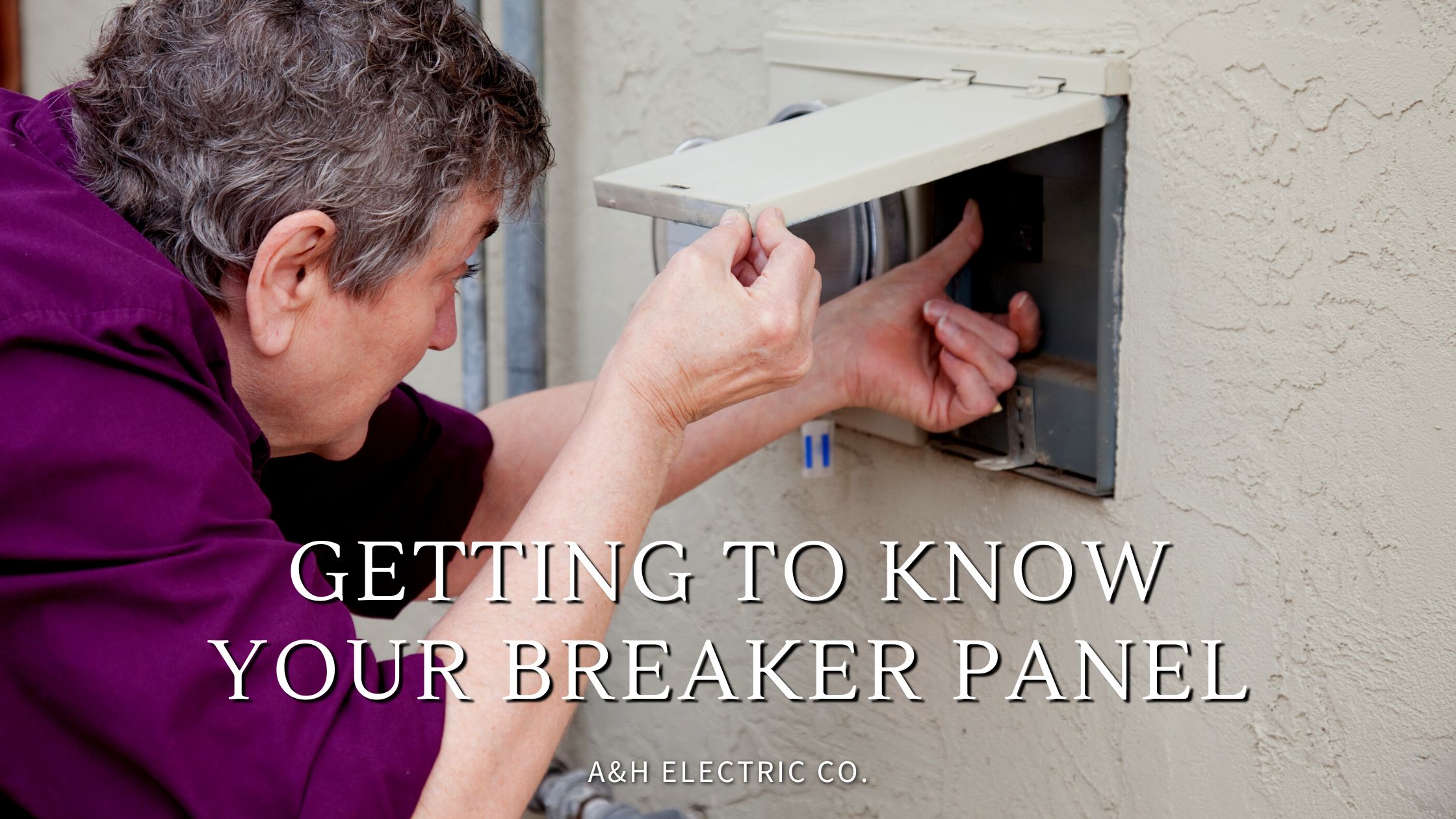Every home should be equipped with a break panel, these panels are just one big switch that is filled with smaller switches, called breakers. These switches help with a variety of things. You should really only need access to the breaker panel for these three tasks:
- to reset a circuit breaker after it trips
- to shut off power to the whole house, if needed
- to turn off power to individual circuits when installing a ceiling fan or replacing an outlet
What am I looking at?
Electrical main: You can, in the case of an emergency, shut off electricity to your entire home using this switch. Located at the top of most boxes, it’s the biggest breaker, usually 100 to 200 amps, depending on the house’s square footage.
Single-pole breakers: These general-purpose breakers likely make up most of the breakers in your box. They can handle 120 volts and are either 15 amps or 20 amps (reference the numbers on top of the switches for proper amps).
Double-pole breakers: Like the electrical main, they look like two switches joined together. They can handle 240 volts and are usually between 15-125 amps. These are for your large appliances, such as stoves, dryers, HVAC units, and water heaters.
Expansion (empty) slots: Many breaker boxes have empty slots, so that you can have a licensed electrician add additional circuits, as needed. This comes in handy if you add a suite of new appliances to your kitchen or want to install covered outlets outdoors.
There are also other types of special purpose breakers, such as Arc Fault Circuit Interrupters (AFCI) and Ground Fault Circuit Interrupters (GFCI) that are designed to provide additional safety protection from fire (AFCI), and electrocution (GFCI).
Why do circuit breakers trip?
A circuit breaker “trips,” shutting off the flow of electricity, ensuring your appliances and/or home don’t become damaged due to an overheating circuit. Before flipping the switch back, it’s important to determine what caused the circuit breaker to trip in the first place. The number one cause is circuit overload (discussed below), however, other, more serious causes, include:
- Short circuits
- Ground faults
Overloading occurs when you power on too many devices at the same time on the same circuit. For example, if you have a 15 amp circuit powering your TV, microwave, and lights all on at the same time, then the circuit breaker will trip to prevent overheating because you’ve exceed the capacity of the electrical wiring. Overheating appliances can also cause a circuit to overload.
The solution? Hire a licensed electrician to come and replace the circuit breaker. You should also consider redistributing some of your lights, appliances, and other devices to another outlet to avoid overloading the circuit. Having a properly labeled panel is important, as well.

